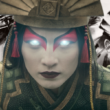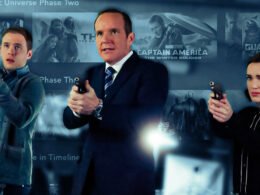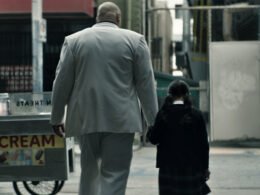Warning: The following contains spoilers for Netflix’s Avatar: The Last Airbender.
After years of anticipation, Netflix’s live-action adaptation of Avatar: The Last Airbender is finally here. Reception to the series has been divisive, but a common praise is that it retains the soul of the original series. But the key word here is adaptation — and with that brings change.
Some of these changes are for the better. They add a layer of lore and history that was not there previously in the beloved animated series. Others are there to assist with the shortened eight-episode window. As the writers creatively merge storylines, it impacts plot points down the road. Not all changes are made equally but these are the biggest changes in Netflix’s re-imagining of Avatar: The Last Airbender.
Fire Lord Sozin Wipes Out the Airbenders

One of the most gut-wrenching aspects of the original series is seeing Aang, completely in denial, finally realize that his whole people have been slaughtered. In the moment, the audience is also with Aang, unsure if Aang is truly the last airbender. Aang eventually finds the remains of his tutor, Monk Gyatso (Lim Kay Siu) among the deceased; it is the only image of the siege that viewers see in the series.
Netflix’s Avatar: The Last Airbender adaptation starts with the most drastic change right off the bat — showing the annihilation of the Air Nomads. In a brutal opening sequence, the firebenders burn the monks alive at their home in the Southern Air Temple. This includes Monk Gyatso, who puts on his best effort but is ousted by Fire Lord Sozin (Hiro Kanagawa) and the Great Comet’s assistance.
Haru Is Nowhere To Be Found
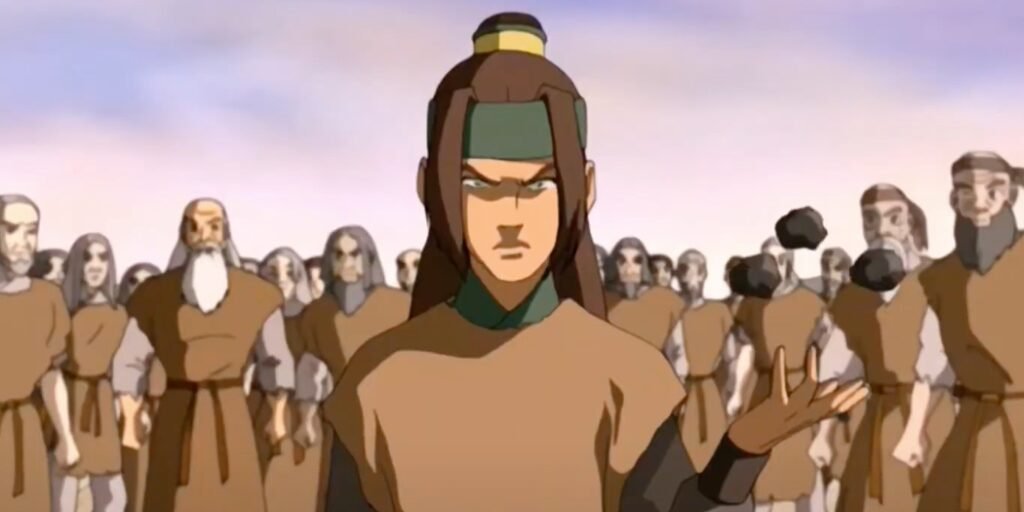
It comes as no surprise that some of the stories from the first season did not make this cut. The exclusion of “Imprisoned,” however, is one of the shocking changes in Avatar: The Last Airbender. The story follows Katara as she tries to help an earthbender and his father escape Fire Nation imprisonment aboard a ship.
This goes a long way in portraying the ruthlessness of the Fire Nation and kickstarts rumblings of earthbending rebellion forces. The episode is even featured in M. Night Shyamalan‘s 2010 The Last Airbender movie — although extremely poorly. Here, Haru’s story is taken out completely.
Avatar Kyoshi Takes Over

Kyoshi (Yvonne Chapman), at one point, takes over Aang’s physical presence to help defeat firebenders on Kyoshi Island. While this scene is new to the series, the concept was achieved in the animated series. Avatar Roku pulls off the same move in the Fire Temple to assist Aang and Kyoshi takes over for Aang when he is on trial for her actions.
The biggest thing here, however, is that Kyoshi gives Aang a vision. She shows him the destruction of the Northern Water Tribe during the Fire Nation attack. Although they also go north to master airbending, this vision serves as Aang’s main quest throughout Season 1. This is a major change, with Sozin’s Comet not playing a factor throughout the first eight episodes.
Avatar Kuruk’s History Is Revealed
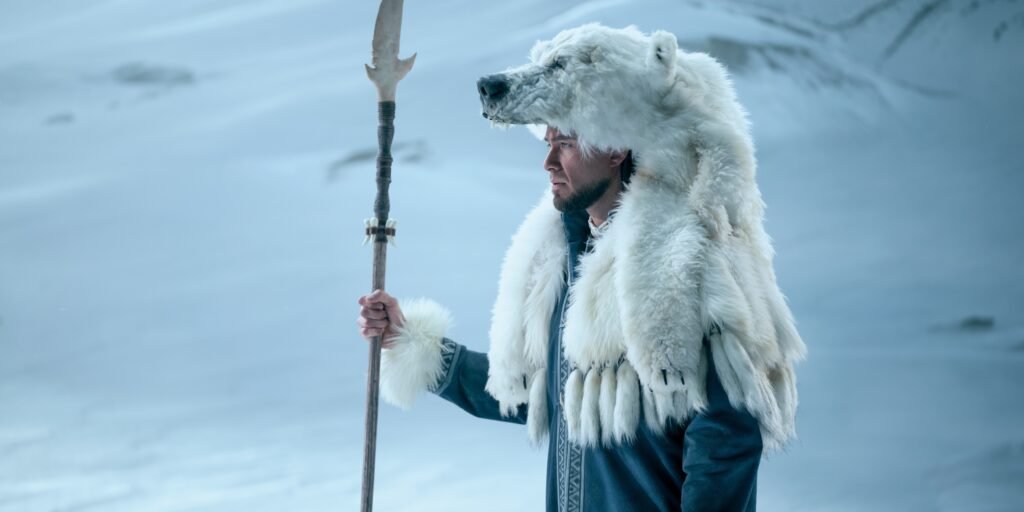
The Chronicles of the Avatar YA books, written by F.C. Yee, are adored by fans for taking a look back at previous Avatars before Aang, starting with Kyoshi. In Kyoshi’s novels, readers learn the short-lived history of Avatar Kuruk. The cause of his death remained a mystery until the second novel Shadow of Kyoshi.
Kuruk had the burden of dealing with dark spirits, resulting in him fighting and killing them. Kuruk dies at a young age because of his battles with the spirits, leaving Kyoshi with his burden. This lore is acknowledged for the first time in Netflix’s live-action adaptation when Aang talks to Avatar Kuruk (Meegwun Fairbrother), perfectly tying it to Admiral Zhao’s quest to kill the moon spirit.
Jet’s Story Takes Place in Omashu

Like Omashu’s transportation chutes weaving throughout the city, King Bumi’s residence serves as the hub for the most changes in Avatar: The Last Airbender. The changes start at the very beginning of the two episodes the series spends there with the inclusion of a rebel who loathes the Fire Nation — Jet (Sebastian Amoruso).
Jet’s storyline ties in with Omashu, instead of a forest village on the gang’s adventures. His Freedom Fighters, including Smellerbee (Wes Valarao), Pipsqueak (Vincent Huang), The Duke (Taylor Lam Wright), and Longshot (Nathaniel Kong) all camp outside the city investigating spies in Omashu. They do discover an informant, another character who had their story moved to the city — The Mechanist (Danny Pudi) and his son Teo (Lucian-River Chuachan).
The Mechanist and Teo Are Changed for the Better
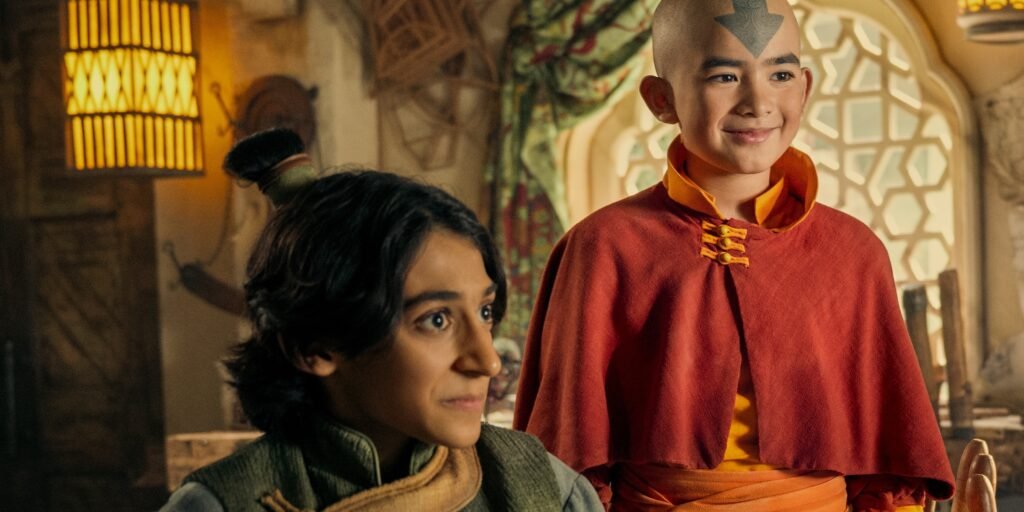
While The Mechanist is still blackmailed to make weapons for the Fire Nation, his son Teo changes quite a bit. In the original show, the pair’s story takes place in the Northern Air Temple. When Aang believes there are still airbenders up north, he is disappointed to find Teo flying around in his wheelchair — not an actual airbender.
Aang believes that because The Mechanist and Teo are trying to make flying machines in a sacred Air Temple, it disrespects the history of his people. The two eventually come to an understanding, however. In the show, Aang briefly mistakes Teo for an airbender in his flying wheelchair, but that is quickly brushed off and the discussion on appropriation is taken away.
Bumi Is As Jaded as Creeping Crystal

King Bumi (Utkarsh Ambudkar) makes his grand live-action debut after missing out in 2010. In the animated series, Bumi is a prankster and a kooky old man — he laughs and plays with his pet goat gorilla among other goofy things. Bumi always knew who Aang was but his identity isn’t revealed until the end of the episode. Omashu’s King forces Aang to play a series of challenges until the Avatar learns of his childhood’s friend identity.
In this iteration, we see one of the more intriguing changes in Avatar: The Last Airbender — Bumi is less of a jokester and more jaded towards Aang. He blames the young Avatar for abandoning his role, leaving the King to make terrible decisions for his city in a war for the past 100 years. Aang also learns Bumi’s identity rather early — taking away the fun challenges and games of Aang trying to figure out his name.
“Secret Tunnel” Makes An Early Debut

Some of the most surprising changes in Avatar: The Last Airbender came with story elements that didn’t appear in the series’ original first season. The beloved “Secret Tunnel” song from Season 2’s “The Cave of Two Lovers” shows up early when Sokka and Katara get lost in the tunnels.
Instead of Katara and Aang traveling through the tunnel, it is Sokka who joins his sister on the journey. The original story of Oma and Shu is updated with two women falling in love and the twist on “only love will shine” now puts the theme on sibling love. Sokka and Katara are at odds with one another since they entered Omashu, but their love for each other (and the help of a Badger Mole) gets them out of the cave.
Iroh’s Haunting Melody “Leaves From The Vine” Can Be Heard

The Secret Tunnel story isn’t the only aspect from Season 2 that makes its way into this live-action adaptation. One of the most revered episodes from the animated series, “Tales of Ba Sing Se,” shows Iroh going throughout his day. Eventually, he sets up a picnic, puts up a photo of his deceased son, and sings a haunting rendition of a children’s lullaby.
In Netflix’s adaptation, Iroh (Paul Sun-Hyung Lee) gets captured and is sent to imprisonment. During his transfer, the history of Iroh’s dead son is explored with the gentle tune of “Leaves From The Vine” playing in the background. These aspects weren’t explored in the first season of the original, however, this adds a layer of context and depth to Iroh’s connection with his nephew.
Zuko, Where Is Your Honor?
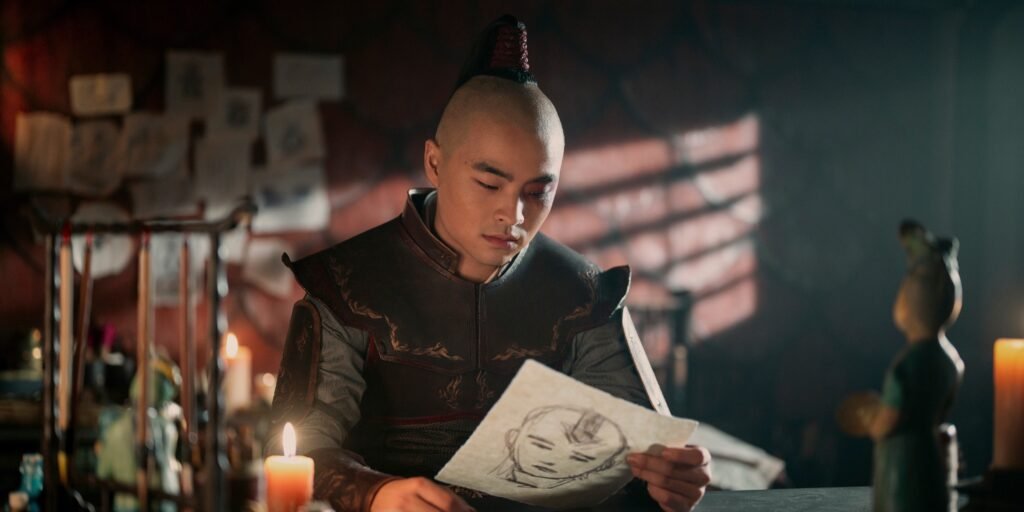
In the first season of the original series, Zuko is focused on one thing — his honor; it’s even an ongoing bit and is constantly made fun of in the parody episode “Ember Island Players.” In a shocking decision, Zuko (Dallas Liu) doesn’t say the word honor once in the entire first season. Although this choice on paper is a huge surprise, it still doesn’t change Zuko’s story.
In the animated series, Zuko believes that his honor is tied to Ozai’s (Daniel Dae Kim) respect and love. Once he is finally able to go home over the believed death of the Avatar, Zuko tries to convince himself he is happy. In the end, he is not. That’s because his true fate is to be the man his mother always believed he should be. The live-action version of Zuko is on the exact same path but without his signature catchphrase.
Zuko is focused on earning his destiny. He wants his father’s love, respect, and a place as heir to the throne. He will eventually get what he thinks he wants, but in the end, he’ll never be happy until he becomes who he’s meant to be.
The Circumstances Around Zuko’s Agni Kai Are Different

The origin of Zuko’s Agni Kai is given extra context, in addition to changing a key element. The reason Zuko must engage this Agni Kai with his father is because he talked back to the Fire Lord, showing compassion for an army squadron (the 41st Division) that was to be used for sacrifice. During the Agni Kai in the animated show, Zuko never fights his father back. However, in this adaptation, Zuko is forced to take up arms against his father.
Zuko does hold back and, eventually, is scarred by his father. In the quick flashback in the original series, Azula (Elizabeth Yu) is seen off to the side giving an evil smirk. In this version, we see the young Princess with her eyes wide in both fear and admiration. Zuko is then banished and sent on his hunt for the Avatar with the 41st Division — who now have respect for the Fire Nation Prince after Iroh tells them his story.
Sokka’s Character Trait Are Updated
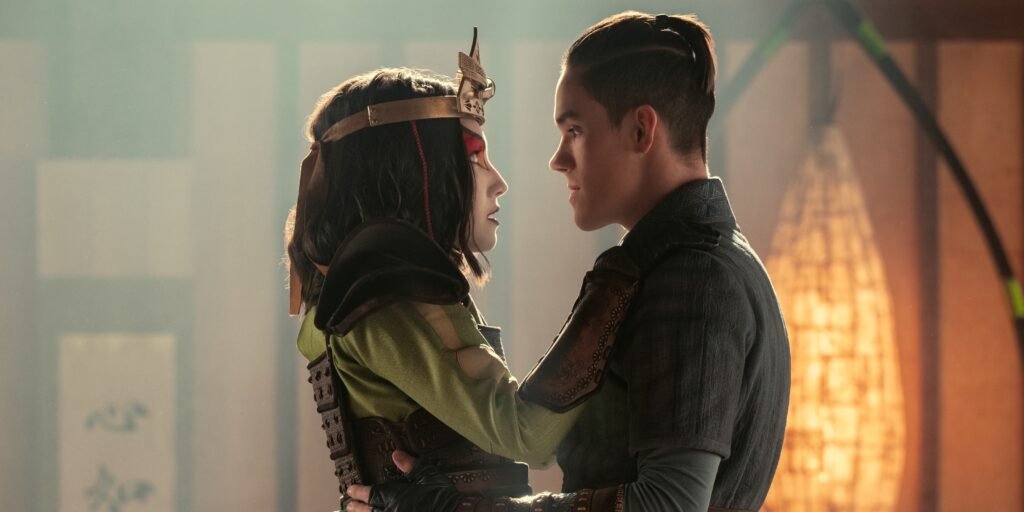
“Team Avatar” is one of the most true and accurate representations in the whole show. Aang (Gordon Cormier), Katara (Kiawentiio), and Sokka (Ian Ousley) all visually fit their roles. But one of the biggest changes involving the young warrior from the Southern Water Tribe sparked controversy over the internet — Sokka is no longer sexist.
Sokka portrays an extremely misogynistic older brother to Katara in the first few episodes of the original show. His dismissal of female warriors changes fairly quickly after he meets Suki on Kyoshi Island in Episode 4. While that aspect is removed, Sokka’s true arc is still present. Like the animated show, he is trying to be the best leader possible and Suki assists him in learning what that really means.
Suki’s (Mariah Zhang) character also goes through one of the more questionable changes in Avatar: The Last Airbender. In the original, she is brash and shows Sokka how ignorant his sexist views are. The adaptation still has Suki telling Sokka off, but more about the ways of a warrior instead. Prolonged shots of Suki eyeing Sokka, from close and afar, give the hint that she may be more interested in him than the original show portrayed. Netflix also imagines Suki as a sheltered girl who never left Kyoshi Island and wants to experience the world at large.
The Avatar Never Learns to Waterbend
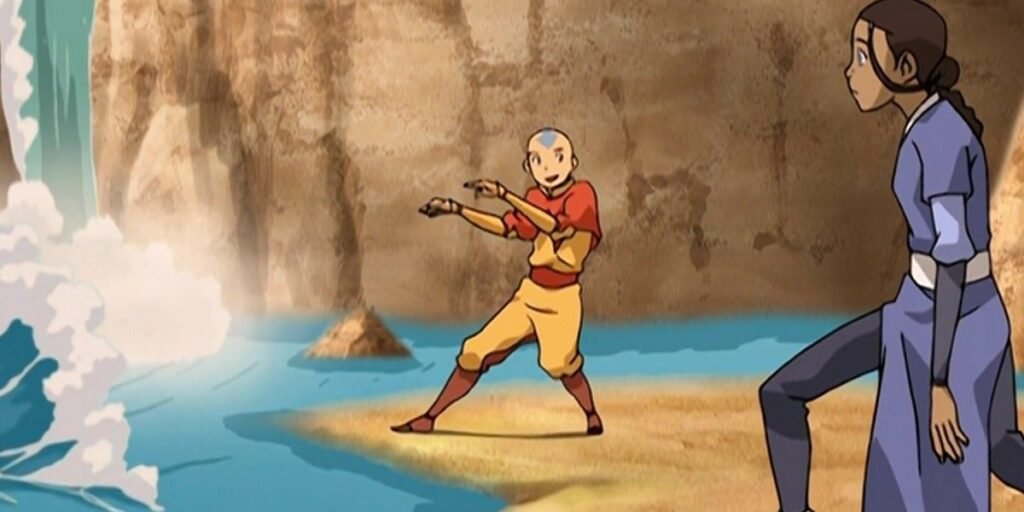
There is a decision with Aang, however, that is one of the worst changes in Avatar: The Last Airbender and is fairly unacceptable. Part of the Avatar’s journey is to learn all four elements. This season is an adaptation of Book One: Water, in which Aang and Katara both learn to waterbend. The difference in this telling is that by the end of this season, Aang doesn’t learn how to waterbend.
He may be taught by Katara between seasons as she was verbally given the ranking of Master by Pakku in the final episode, but it is a bizarre choice to not show the Avatar learning how to waterbend with Katara as the season goes on.
Azula Earns Her Blue Flames

The mid-2000s Nickelodeon series doesn’t introduce Azula until the end of the Season 1 finale. By the time fans meet the Fire Nation Princess in Season 2, she is a fully realized firebender with blue flames.
Azula was not born with blue flames, as it is not a genetic firebending trait. In reality, fire burns blue the more intense it is, which is exactly where the blue flame comes from in the show as well. Azula is seen firebending with the usual red flame at the beginning of the show, but in a brief moment when she is sparring her rage becomes so intense that the iconic blue flame appears.
Her father, Fire Lord Ozai, plays his children like marionette puppets, claiming he is trying to get the best out of them. In his mind, he succeeds as his daughter shows she can pull off a rare feat by lightningbending during a trial.
Avatar Roku Is Incredibly Unserious

One of the most bizarre changes in Avatar: The Last Airbender is the portrayal of Avatar Roku (C.S. Lee). In the original series, Avatar Roku is a stern but calming presence to Aang. He is primarily Aang’s main contact in his past life and the young Avatar relies on him first throughout the series.
This version of Roku feels like a completely different character. While still kind to Aang, the previous Avatar comes across as goofy and straight-up unserious; he jokes with Aang right off the bat. Roku also gives terrible advice, telling Aang that friends can be a liability. This comes after he mentions the consequences of the Avatar failing a peaceful negotiation, which is a not-so-subtle nod to Roku’s biggest mistake — his inability to stop Fire Lord Sozin before it was too late.
Netflix Switches Aang’s Biggest Fear

One of the more unappreciated episodes, Season 1’s “The Deserter” focuses on Aang attempting to learn firebending from a master who left the Fire Nation. In the process, Aang burns Katara making him terrified of the element.
The live-action series cuts that aspect in its storytelling, instead, replacing the fear of firebending with the Avatar State itself — he is worried that he will hurt his friends since he cannot control it. By the end of this season, Aang still has yet to master the Avatar State.
Aang’s Spirit World Encounter With Koh the Face Stealer Alters the Season’s Ending

Image Credit: Netflix
Aang’s trip into the Spirit World comes with many surprises changes. Instead of going in alone to calm Hei Bai (the spirit of the forest), Aang accidentally brings Katara and Sokka with him. On their journey they see Wan Shi Tong (Randall Duk Kim), the giant owl spirit of knowledge from the season 2 episode “The Library.”
The Spirit World is also used as a precursor to what the swamp’s fog does to the gang in the original show. There, Katara and Sokka see flashes of their lowest point; Katara sees the day her mother was murdered and Sokka relives when his father claims his disappointment for him. The two are then taken away by the spirit Koh the Face Stealer. Koh’s background is also unearthed when Roku shows Aang a totem of the Mother of Faces — Koh’s mother that was introduced in the comics. In this version, Koh does not reveal to the Avatar the identity of the Moon and Ocean spirits. Instead, Zhao discovers them on his own.
Aang also meets his mentor and friend, Monk Gyatso while in the Spirit World. Regular humans being in the Spirit World is not a new concept in the world of Avatar. In Legends of Korra, the Avatar meets Uncle Iroh during her journey through the spirit world. In the novel, The Legacy of Yangchen, the Avatar and her sister travel through the spirit world together, long before Korra opens the spirit portals.
Time Will Tell How Netflix’s Changes To ‘Avatar: The Last Airbender’ Fare
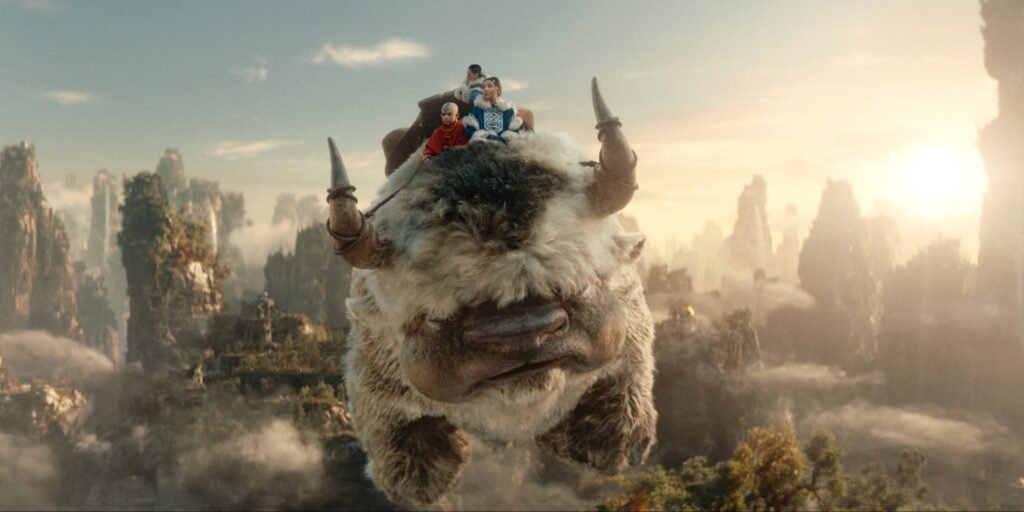
Adaptations naturally bring change. Some have the chance to expand on the story while others are made to assist with runtimes. Additions like diving into previous Avatar’s histories and Azula’s expanded backstory can end up elevating the series, but the removal of key elements, like Aang never learning to waterbend, can be detrimental to a retelling. Only time will tell how these changes will come to be remembered.
Changes come with the times; and time, in a way, is like water. As Master Pakku (A Martinez) says, “Water is the element of change. Change is the key to new life.”
Follow the Agents of Fandom socials for all the latest news, reviews, and entertainment coverage.






